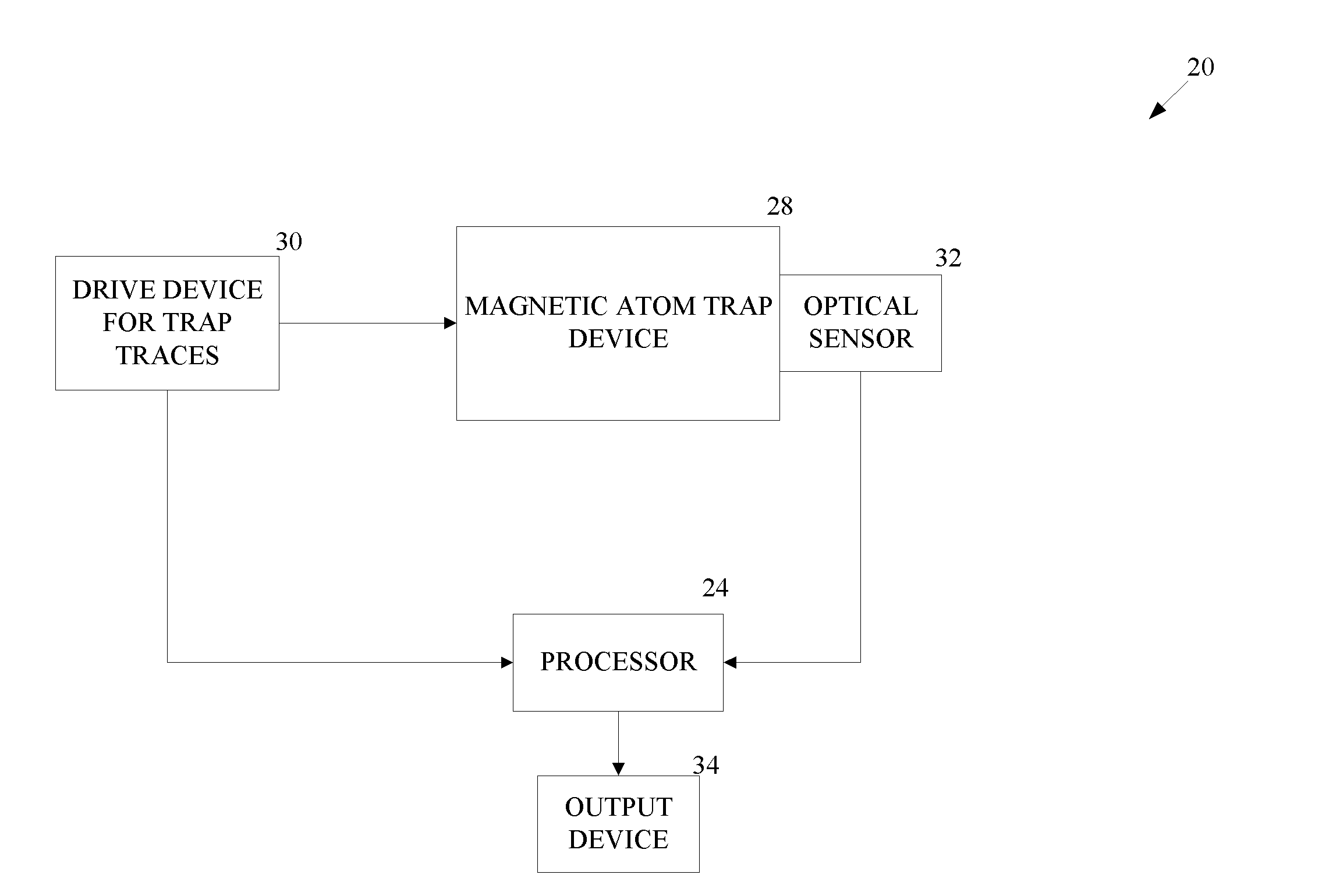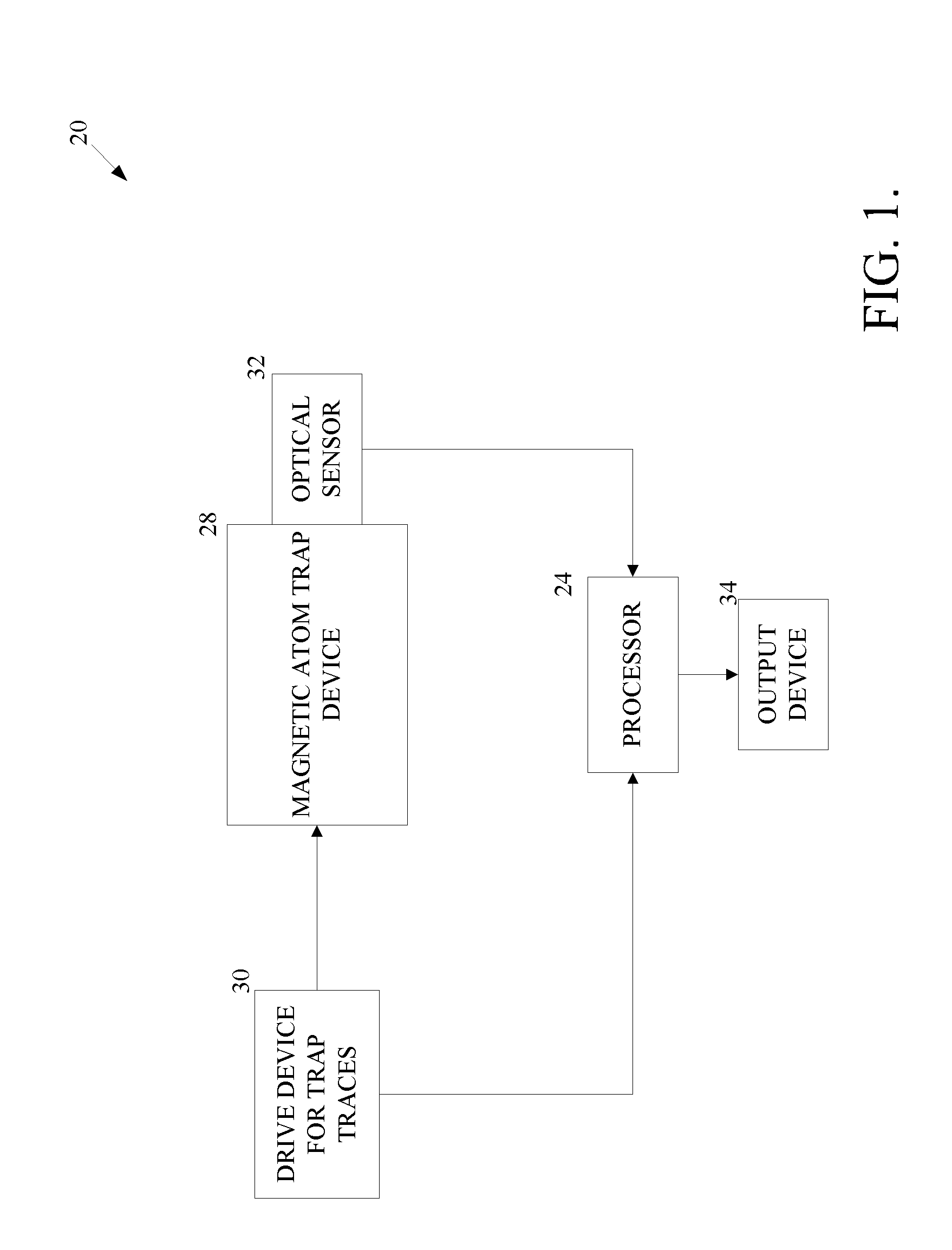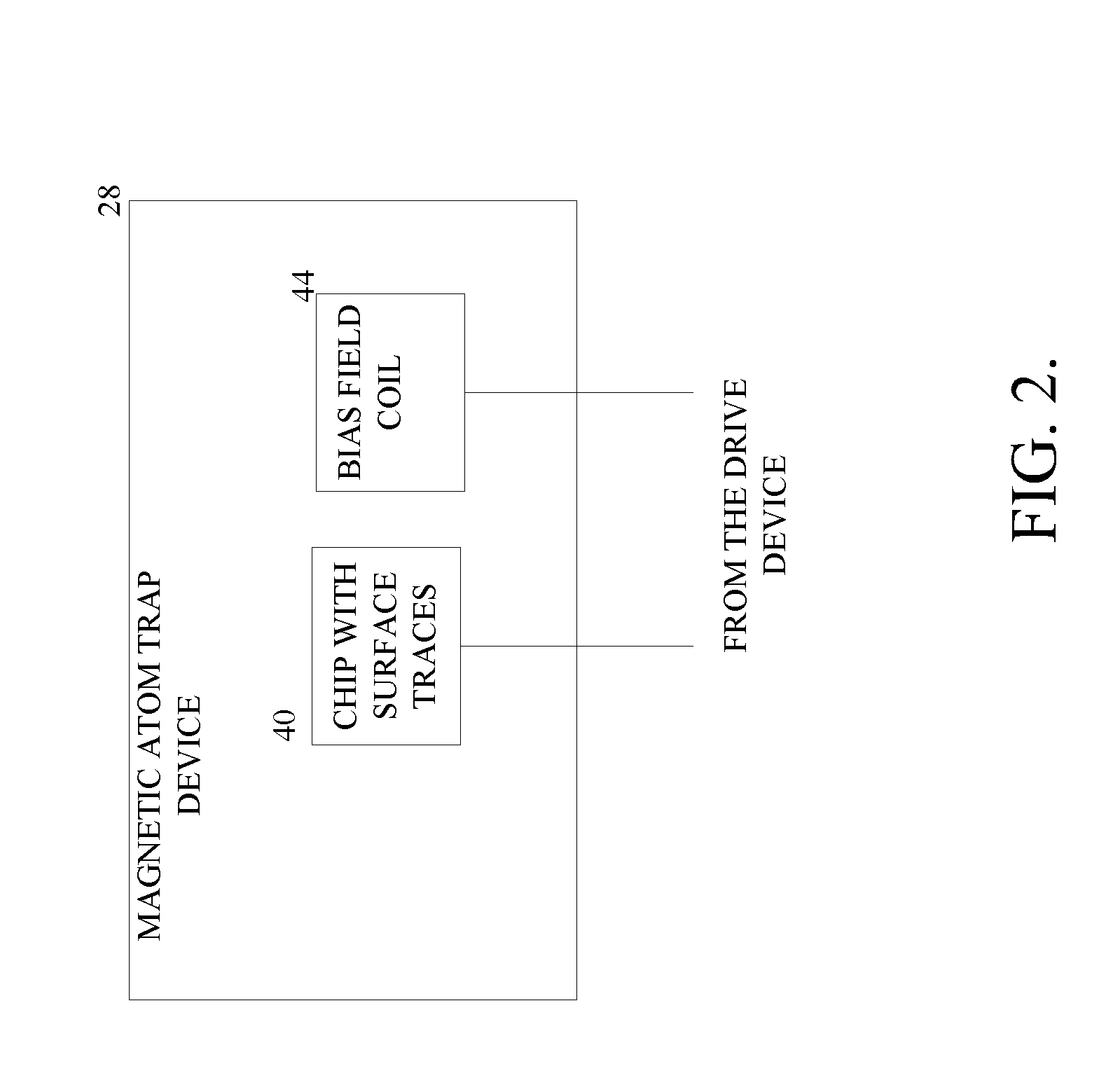Atom-based accelerometer
a technology of accelerometer and atom, applied in the direction of speed/acceleration/shock measurement, measurement devices, instruments, etc., can solve the problems of limited application of atom-interferometric accelerometer, and achieve the effect of reducing the potential energy associated with the interaction
- Summary
- Abstract
- Description
- Claims
- Application Information
AI Technical Summary
Benefits of technology
Problems solved by technology
Method used
Image
Examples
Embodiment Construction
[0018]As shown in FIG. 1, an atom-based accelerometer 20 includes a magnetic atom trap device 28 located at least partially within a vacuum. The atom-based accelerometer 20 also includes an optical sensor 32, a processor 24, a drive device 30 and an output device 34.
[0019]The drive device 30 applies radio frequency (rf) current (signal) and / or an alternating current (AC) to traces on a chip 40 within the trap device 28 according to instructions from the processor 24 (FIG. 2). Atoms are manipulated by magnetic fields produced by the traces. At a certain point in time, the optical sensor identifies a phase of the atoms then the processor 24 determines an acceleration (or ΔV) value based on the phase of the atoms and sends the results to the output device 34.
[0020]FIG. 3 shows an exemplary process 70 performed by the atom-based accelerometer 20. First an atomic Bose-Einstein condensate is prepared from a cold atom sample collected and storied in a Magneto Optical Trap (MOT) using metho...
PUM
 Login to View More
Login to View More Abstract
Description
Claims
Application Information
 Login to View More
Login to View More - R&D
- Intellectual Property
- Life Sciences
- Materials
- Tech Scout
- Unparalleled Data Quality
- Higher Quality Content
- 60% Fewer Hallucinations
Browse by: Latest US Patents, China's latest patents, Technical Efficacy Thesaurus, Application Domain, Technology Topic, Popular Technical Reports.
© 2025 PatSnap. All rights reserved.Legal|Privacy policy|Modern Slavery Act Transparency Statement|Sitemap|About US| Contact US: help@patsnap.com



